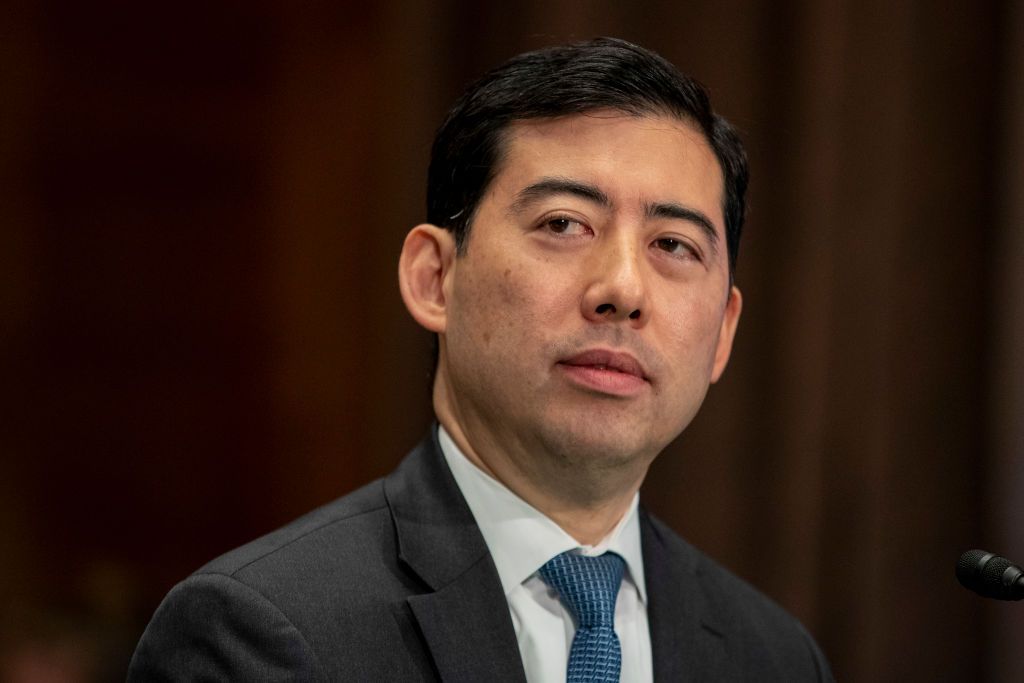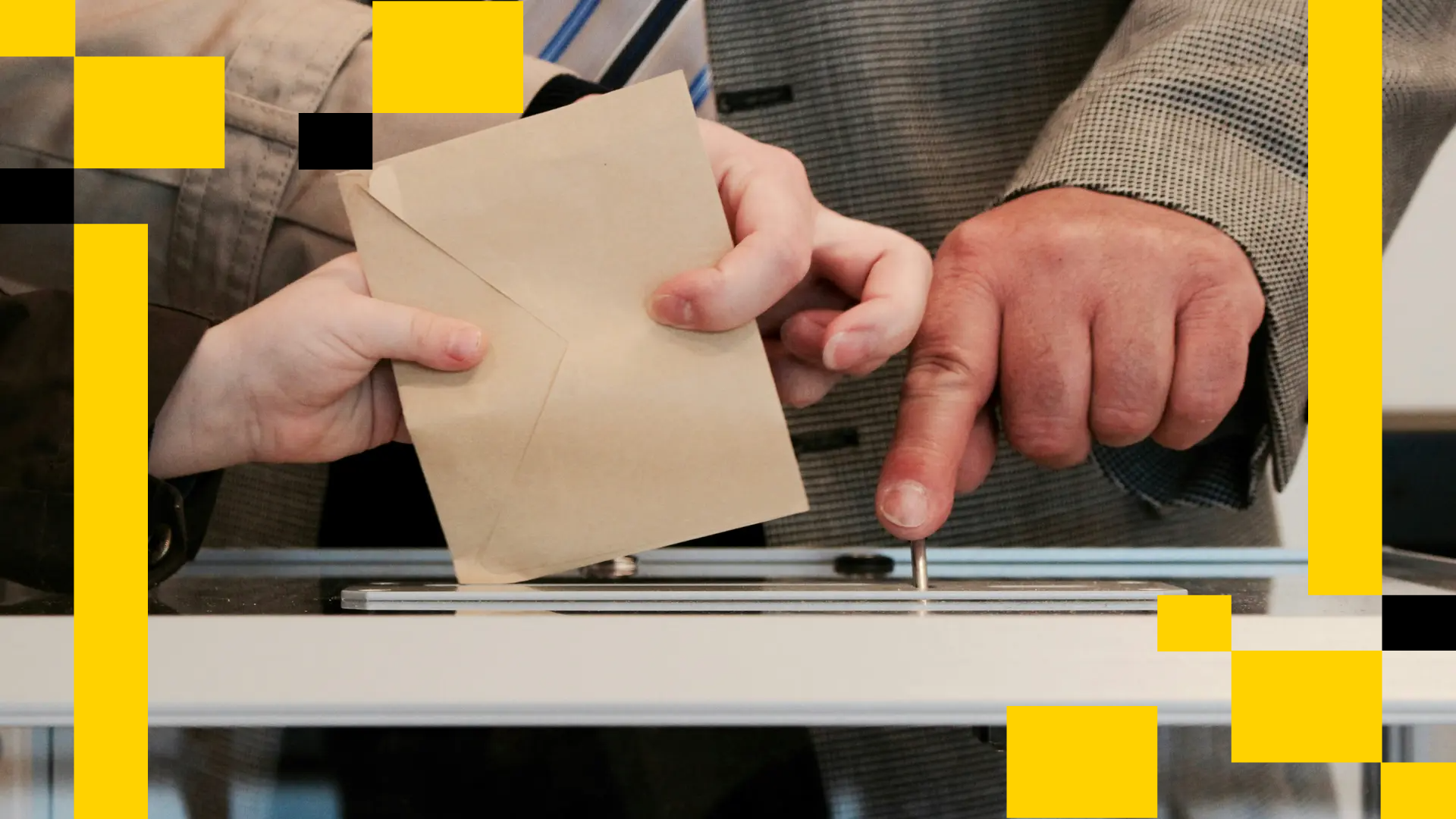Uncategorized
10 Commandments for Federal Securities Laws

U.S. financial markets have long been burdened with a patchwork of outdated, overly complex, paternalistic rules. Meanwhile, the government’s failure to establish a regulatory regime for digital assets, coupled with its aggressive persecution of the industry, has stifled innovation. Unsurprisingly, the rest of the world surged ahead, leaving the U.S. behind.
Now, under President Trump’s leadership, we stand on the brink of a historic shift. His “largest deregulation campaign in history” and “revolution of common sense,” offers us a rare chance to remove artificial boundaries, retire antiquated philosophies, and rethink our approach to regulating financial markets and digital asset ecosystems. Instead of creating and being bound by reactive regulations designed for past crises and technologies, we can design flexible, forward-looking frameworks that promote innovation.
As I envision these frameworks, I’m reminded of wisdom shared by Securities and Exchange Commission Chairman Harvey Pitt (2001-2003), a lion of the securities bar, who proposed a simple yet profound solution to improve U.S. equity markets: develop guiding principles for our markets to embody. Chairman Pitt likened these to God’s Ten Commandments — clear principles to govern conduct with the industry tasked to meet them.
Too often, regulators and market participants get bogged down in the minutiae of prescriptive laws and miss their core intent. While norms, standards and rules have their place, the “ten commandments” proposed here provide a strong foundation for future frameworks. The key is to first understand the purpose of the federal securities laws.
At their core, these laws govern transactions involving securities — whether shares of a company, loan promises, or investment stakes. When people entrust you with their money, you owe them specific duties. The securities laws are primarily a disclosure regime designed to ensure fair and transparent exchanges that give investors the information they need to assess the risks and rewards of their investments.
Read more: Trump Said to Consider Crypto Lawyer Teresa Goody Guillén to Lead SEC
These laws emerged after the 1929 stock market crash, which was fueled by unethical practices such as insider trading and stock manipulation, and exacerbated by information asymmetry between buyers and sellers of securities. The Securities Act of 1933 and the Securities Exchange Act of 1934 were enacted to prevent these abuses and to facilitate companies obtain capital, protect investors who invest their capital, and ensure markets are fair and efficient, while minimizing burdens on honest business activities.
Despite good intentions, these laws have become overly complex, stifling competition and limiting investor freedom. To reimagine financial market regulation, particularly in light of emerging technologies and digital assets subject to the securities laws, we must return to the principles that shaped these laws —principles that promote fairness while minimizing burdens on honest businesses.
Based on Chairman Pitt’s vision, I distilled the core values for market participants into the following ten commandments for a trustworthy market:
Thou shalt disclose material information. Full and fair disclosure is the crux of the securities laws. Issuers must provide truthful, complete, and nondeceptive material information to investors so they can make informed financial decisions. Concealing or misrepresenting critical information that impacts profit expectations undermines trust and market integrity.
Thou shalt not deceive or manipulate. Fraud and market manipulation distort securities’ true value, harming investors and the market. Preventing deceptive practices helps ensure fairness.
Thou shalt not trade on material nonpublic information. Insider trading gives an unfair advantage to those with access to confidential information. This ensures a fair playing field for all market participants.
Thou shalt tell the truth about your financial health. Financial statements must be accurate and transparent, reflecting a company’s true financial condition, so investors can accurately assess risks and make informed financial decisions.
Thou shalt treat all investors equally. All investors must have equal access to material information and opportunities. This ensures fairness and prevents insider advantages and discriminatory practices.
Thou shalt reveal the risks involved. Investors must be informed of the risks associated with their investments so they can make choices aligned with their financial goals and risk tolerance.
Thou shalt act in accordance with your duties to others. Market participants who owe obligations of trust and responsibility, such as financial professionals and corporate directors, must act in the interests of their clients and shareholders, not for their own personal gain.
Thou shalt strive to avoid conflicts of interest, but if some are unavoidable, thou shalt disclose them. Market participants should avoid or minimize conflicts of interest, but if unavoidable, conflicts must be disclosed. Transparency allows investors to make decisions with an understanding of potential biases and preserves trust.
Thou shalt ensure fair and transparent markets. Markets must operate on the basis of true supply and demand, free from artificial distortions. This promotes trust and fair pricing.
Thou shalt promote efficient and orderly markets. Markets must operate smoothly, with transparent pricing and equal access for all participants. This fosters market stability and investor trust.
By focusing on these core principles, we can create adaptable regulatory frameworks that keep pace with technological advancements and avoid the constraints of outdated laws. This is the time for a seismic shift in financial regulation toward an approach that anticipates future markets and innovations. We can build a future-proof financial system that benefits everyone by ensuring clarity, fairness, and order while fostering innovation.
Uncategorized
What’s Next for Bitcoin and Ether as Downside Fears Ease Ahead of Fed Rate Cut?

Fears of a downside for bitcoin (BTC) and ether (ETH) have eased substantially, according to the latest options market data. However, the pace of the next upward move in these cryptocurrencies will largely hinge on the magnitude of the anticipated Fed rate cut scheduled for Sept. 17.
BTC’s seven-day call/put skew, which measures how implied volatility is distributed across calls versus puts expiring in a week, has recovered to nearly zero from the bearish 4% a week ago, according to data source Amberdata.
The 30- and 60-day option skews, though still slightly negative, have rebounded from last week’s lows, signaling a notable easing of downside fears. Ether’s options skew is exhibiting a similar pattern at the time of writing.
The skew shows the market’s directional bias, or the extent to which traders are more concerned about prices rising or falling. A positive skew suggests a bias towards calls or bullish option plays, while a negative reading indicates relatively higher demand for put options or downside protection.
The reset in options comes as bitcoin and ether prices see a renewed upswing in the lead-up to Wednesday’s Fed rate decision, where the central bank is widely expected to cut rates and lay the groundwork for additional easing over the coming months. BTC has gained over 4% to over $116,000 in seven days, with ether rising nearly 8% to $4,650, according to CoinDesk data.
What happens next largely depends on the size of the impending Fed rate cut. According to CME’s Fed funds futures, traders have priced in over 90% probability that the central bank will cut rates by 25 basis points (bps) to 4%-4.25%. But there is also a slight possibility of a jumbo 50 bps move.
BTC could go berserk in case the Fed delivers the surprise 50 bps move.
«A surprise 50 bps rate cut would be a massive +gamma BUY signal for ETH, SOL and BTC,» Greg Magadini, director of derivatives at Amberdata, said in an email. «Gold will go absolutely nuts as well.»
Note that the Deribit-listed SOL options already exhibit a strong bullish sentiment, with calls trading at 4-5 volatility premium to puts.
Magadini explained that if the decision comes in line with expectations for a 25 bps cut, then a continued calm «grind higher» for BTC looks likely. ETH, meanwhile, may take another week or so to retest all-time highs and convincingly trade above $5,000, he added.
Uncategorized
Asia Morning Briefing: Native Markets Wins Right to Issue USDH After Validator Vote

Good Morning, Asia. Here’s what’s making news in the markets:
Welcome to Asia Morning Briefing, a daily summary of top stories during U.S. hours and an overview of market moves and analysis. For a detailed overview of U.S. markets, see CoinDesk’s Crypto Daybook Americas.
Hyperliquid’s validator community has chosen Native Markets to issue USDH, ending a weeklong contest that drew proposals from Paxos, Frax, Sky (ex-MakerDAO), Agora, and others.
Native Markets, co-founded by former Uniswap Labs president MC Lader, researcher Anish Agnihotri, and early Hyperliquid backer Max Fiege, said it will begin rolling out USDH “within days,” according to a post by Fiege on X.
According to onchain trackers, Native Markets’ proposal took approximately 70% of validators’ votes, while Paxos took 20%, and Ethena came in at 3.2%.
The staged launch starts with capped mints and redemptions, followed by a USDH/USDC spot pair before caps are lifted.
USDH is designed to challenge Circle’s USDC, which currently dominates Hyperliquid with nearly $6 billion in deposits, or about 7.5% of its supply. USDC and other stablecoins will remain supported if they meet liquidity and HYPE staking requirements.
Most rival bidders had promised to channel stablecoin yields back to the ecosystem with Paxos via HYPE buybacks, Frax through direct user yield, and Sky with a 4.85% savings rate plus a $25 million “Genesis Star” project.
Native Markets’ pitch instead stressed credibility, trading experience, and validator alignment.
Market Movement
BTC: BTC has recently reclaimed the $115,000 level, helped by inflows into ETFs, easing U.S. inflation data, and growing expectations for interest rate cuts. Also, technical momentum is picking up, though resistance sits around $116,000, according to CoinDesk’s market insights bot.
ETH: ETH is trading above $4600. The price is being buoyed by strong ETF inflows.
Gold: Gold continues to trade near record highs as traders eye dollar weakness on expected Fed rate cuts.
Elsewhere in Crypto:
Uncategorized
BitMEX Co-Founder Arthur Hayes Sees Money Printing Extending Crypto Cycle Well Into 2026

Arthur Hayes believes the current crypto bull market has further to run, supported by global monetary trends he sees as only in their early stages.
Speaking in a recent interview with Kyle Chassé, a longtime bitcoin and Web3 entrepreneur, the BitMEX co-founder and current Maelstrom CIO argued that governments around the world are far from finished with aggressive monetary expansion.
He pointed to U.S. politics in particular, saying that President Donald Trump’s second term has not yet fully unleashed the spending programs that could arrive from mid-2026 onward. Hayes suggested that if expectations for money printing become extreme, he may consider taking partial profits, but for now he sees investors underestimating the scale of liquidity that could flow into equities and crypto.
Hayes tied his outlook to broader geopolitical shifts, including what he described as the erosion of a unipolar world order. In his view, such periods of instability tend to push policymakers toward fiscal stimulus and central bank easing as tools to keep citizens and markets calm.
He also raised the possibility of strains within Europe — even hinting that a French default could destabilize the euro — as another factor likely to accelerate global printing presses. While he acknowledged these policies eventually risk ending badly, he argued that the blow-off top of the cycle is still ahead.
Turning to bitcoin, Hayes pushed back on concerns that the asset has stalled after reaching a record $124,000 in mid-August.
He contrasted its performance with other asset classes, noting that while U.S. stocks are higher in dollar terms, they have not fully recovered relative to gold since the 2008 financial crisis. Hayes pointed out that real estate also lags when measured against gold, and only a handful of U.S. technology giants have consistently outperformed.
When measured against bitcoin, however, he believes all traditional benchmarks appear weak.
Hayes’ message was that bitcoin’s dominance becomes even clearer once assets are viewed through the lens of currency debasement.
For those frustrated that bitcoin is not posting fresh highs every week, Hayes suggested that expectations are misplaced.
In his telling, investors from the traditional world and those in crypto actually share the same premise: governments and central banks will print money whenever growth falters. Hayes says traditional finance tends to express this view by buying bonds on leverage, while crypto investors hold bitcoin as the “faster horse.”
His conclusion is that patience is essential. Hayes argued that the real edge of holding bitcoin comes from years of compounding outperformance rather than short-term speculation.
Coupled with what he sees as an inevitable wave of money creation through the rest of the decade, he believes the present crypto cycle could stretch well into 2026, far from exhausted.
-

 Business11 месяцев ago
Business11 месяцев ago3 Ways to make your business presentation more relatable
-

 Fashion11 месяцев ago
Fashion11 месяцев agoAccording to Dior Couture, this taboo fashion accessory is back
-

 Entertainment11 месяцев ago
Entertainment11 месяцев ago10 Artists who retired from music and made a comeback
-

 Entertainment11 месяцев ago
Entertainment11 месяцев ago\’Better Call Saul\’ has been renewed for a fourth season
-

 Entertainment11 месяцев ago
Entertainment11 месяцев agoNew Season 8 Walking Dead trailer flashes forward in time
-

 Business11 месяцев ago
Business11 месяцев ago15 Habits that could be hurting your business relationships
-

 Entertainment11 месяцев ago
Entertainment11 месяцев agoMeet Superman\’s grandfather in new trailer for Krypton
-

 Entertainment11 месяцев ago
Entertainment11 месяцев agoDisney\’s live-action Aladdin finally finds its stars





